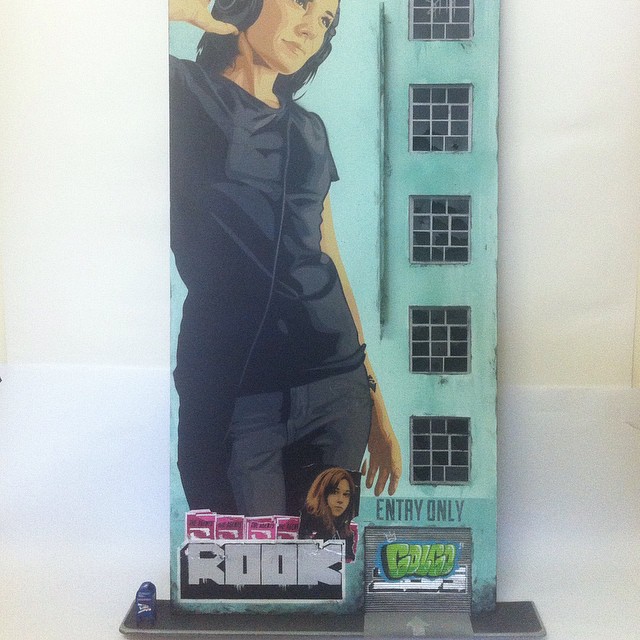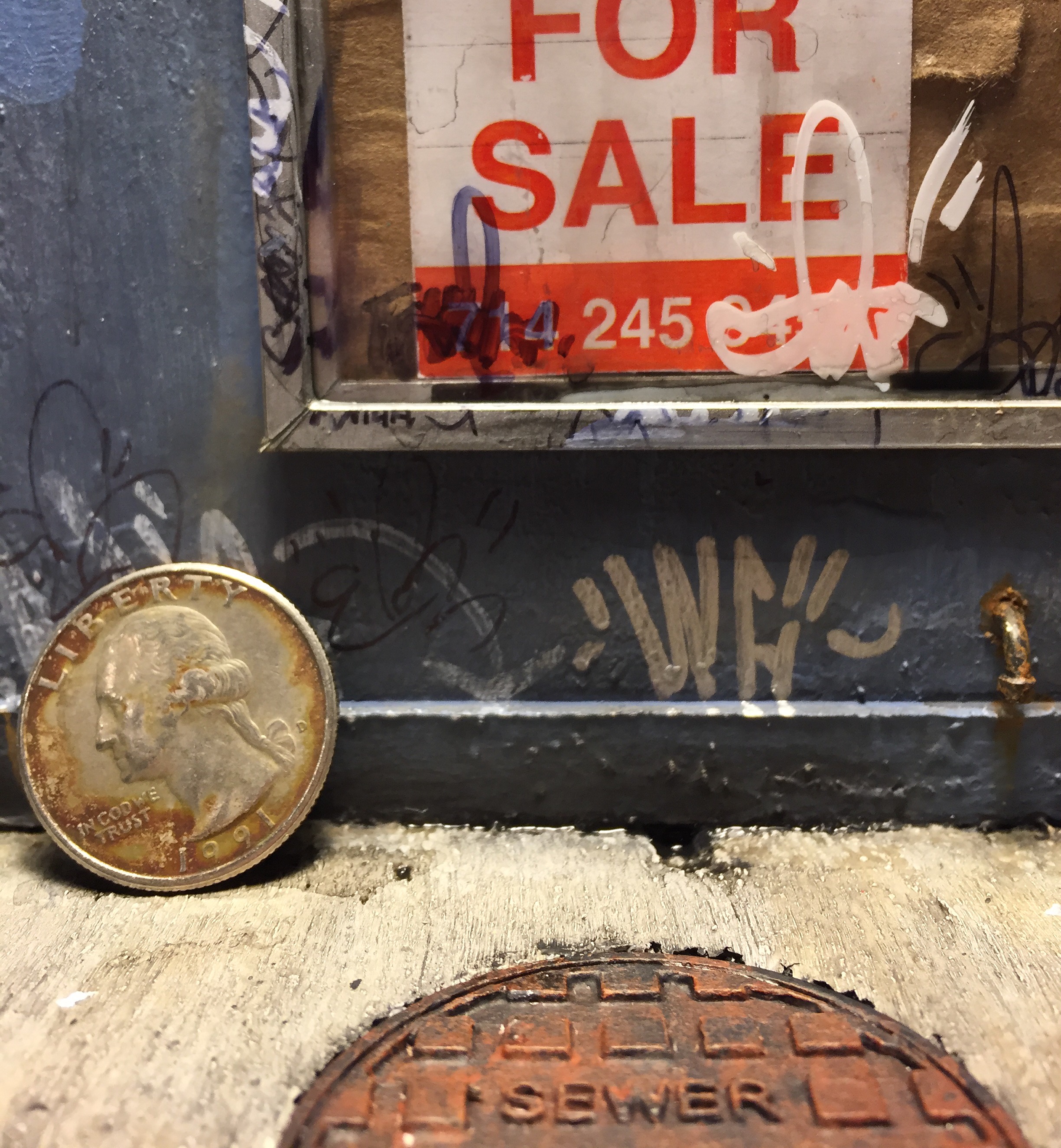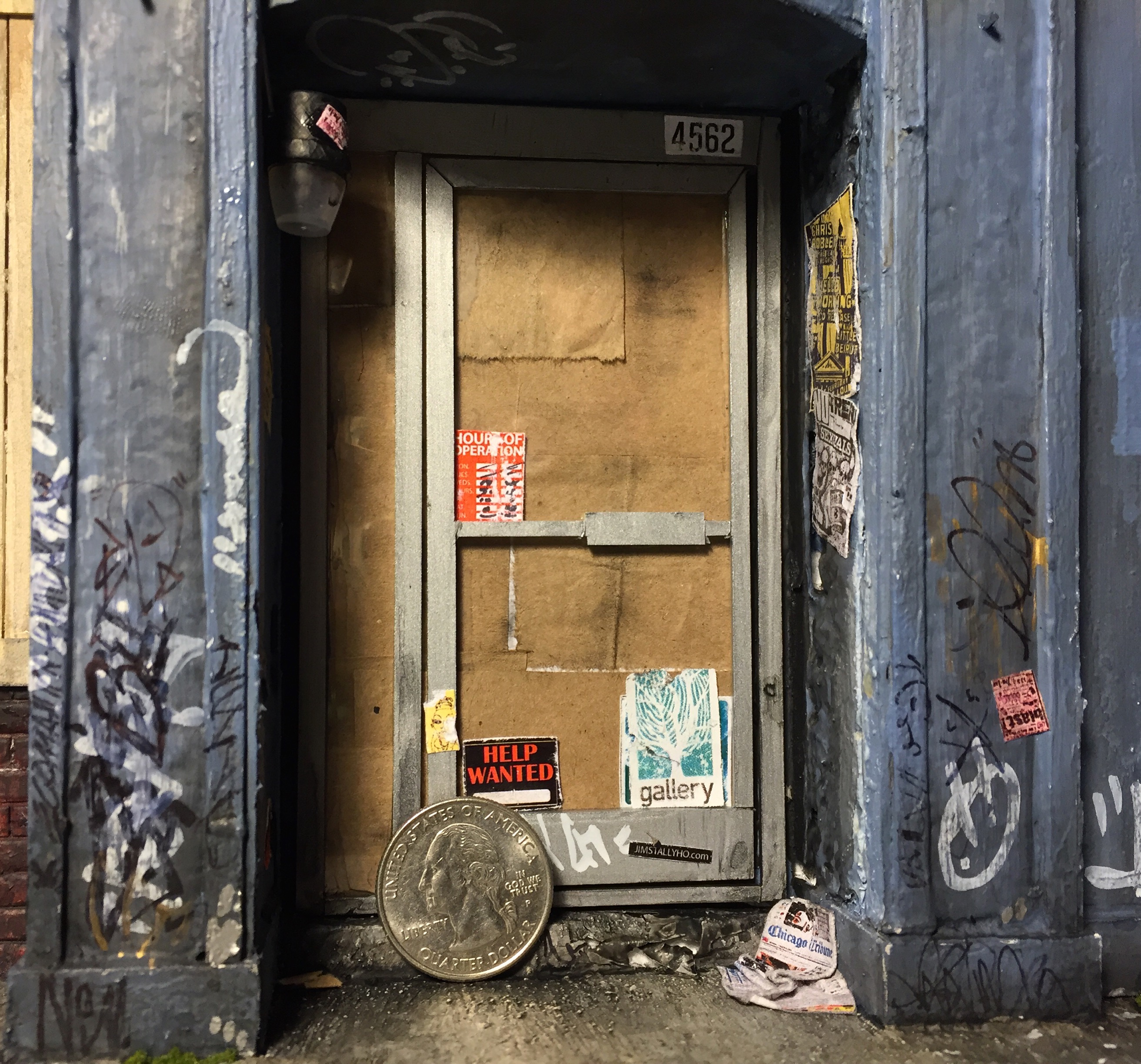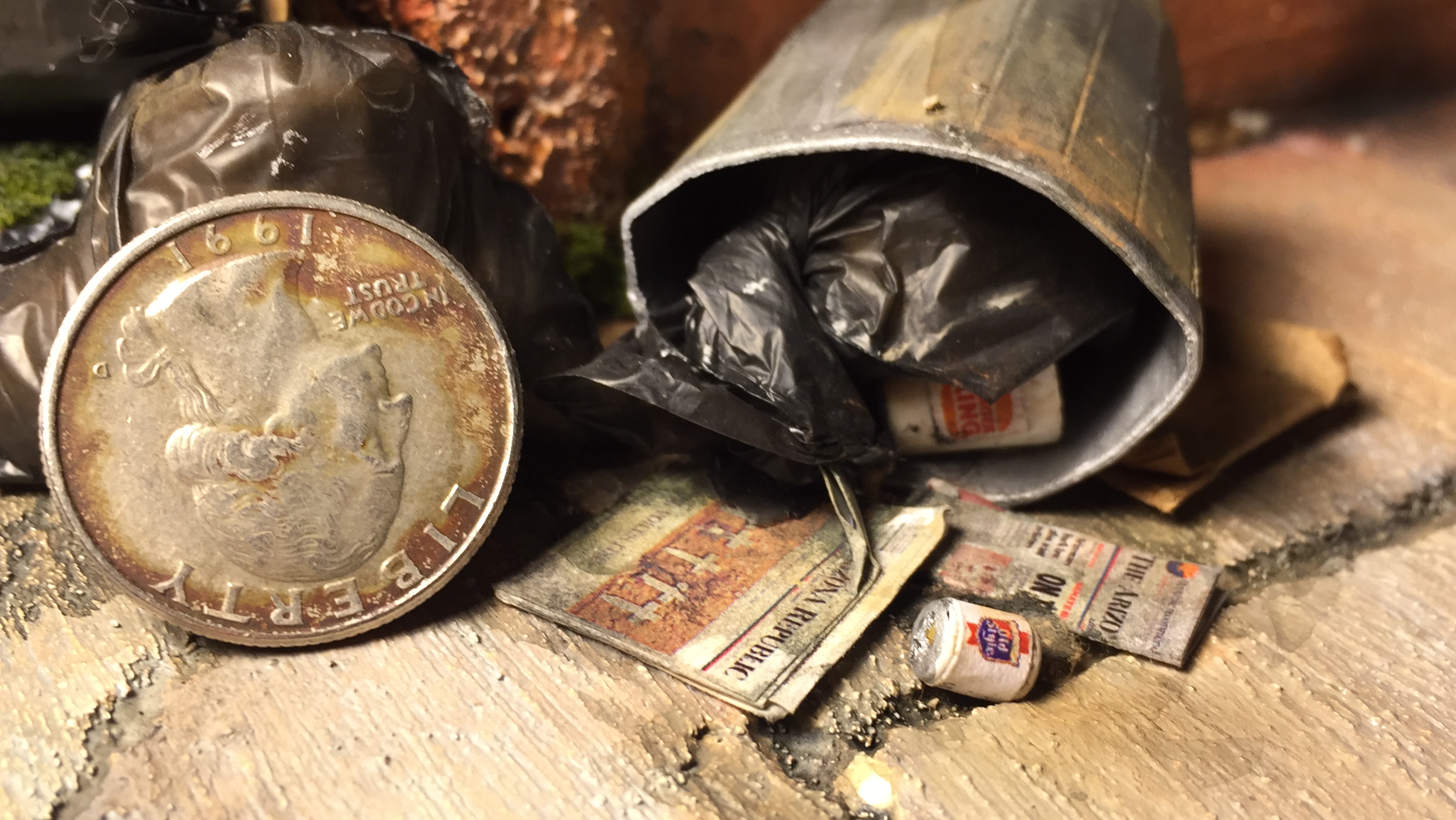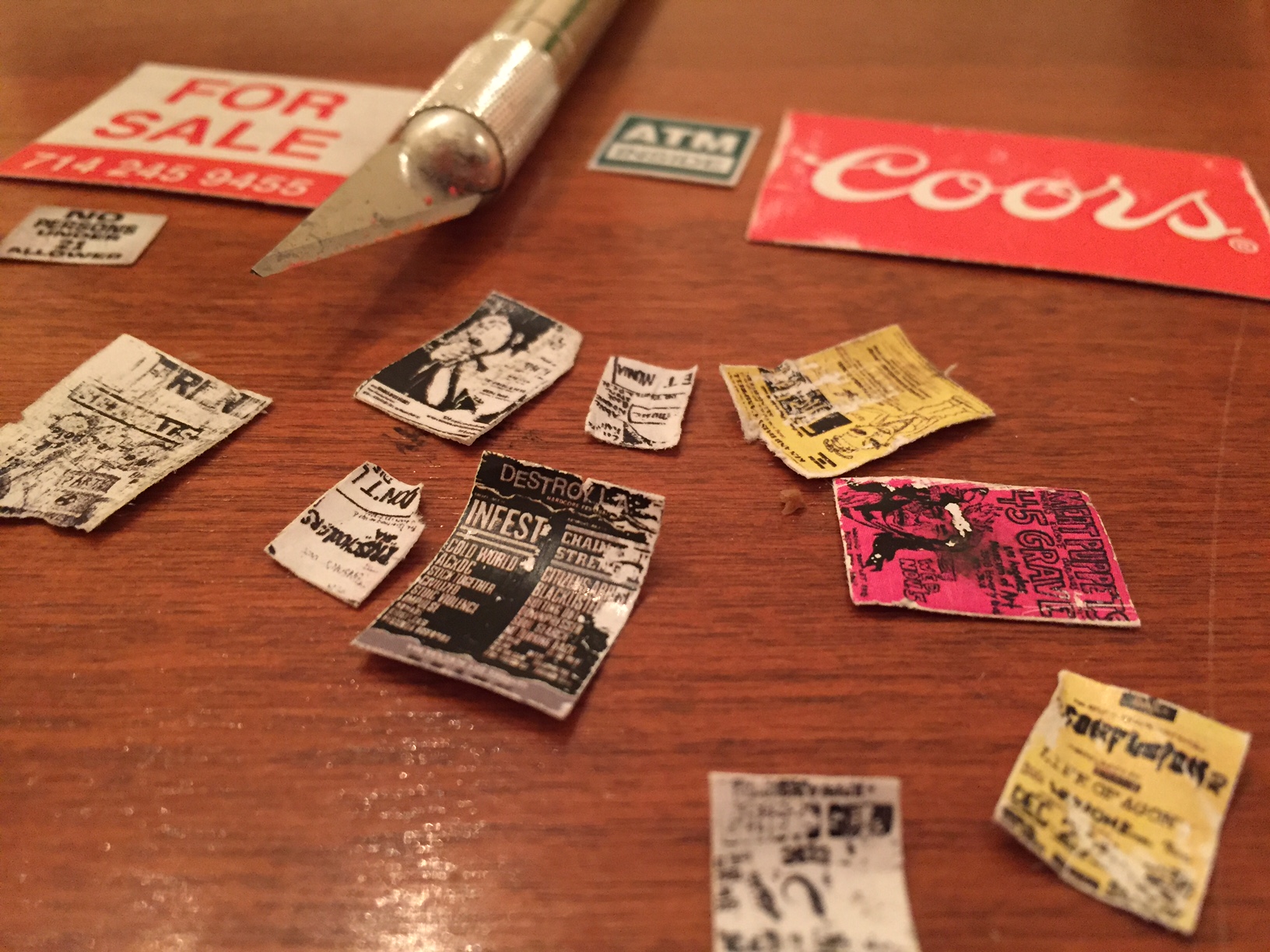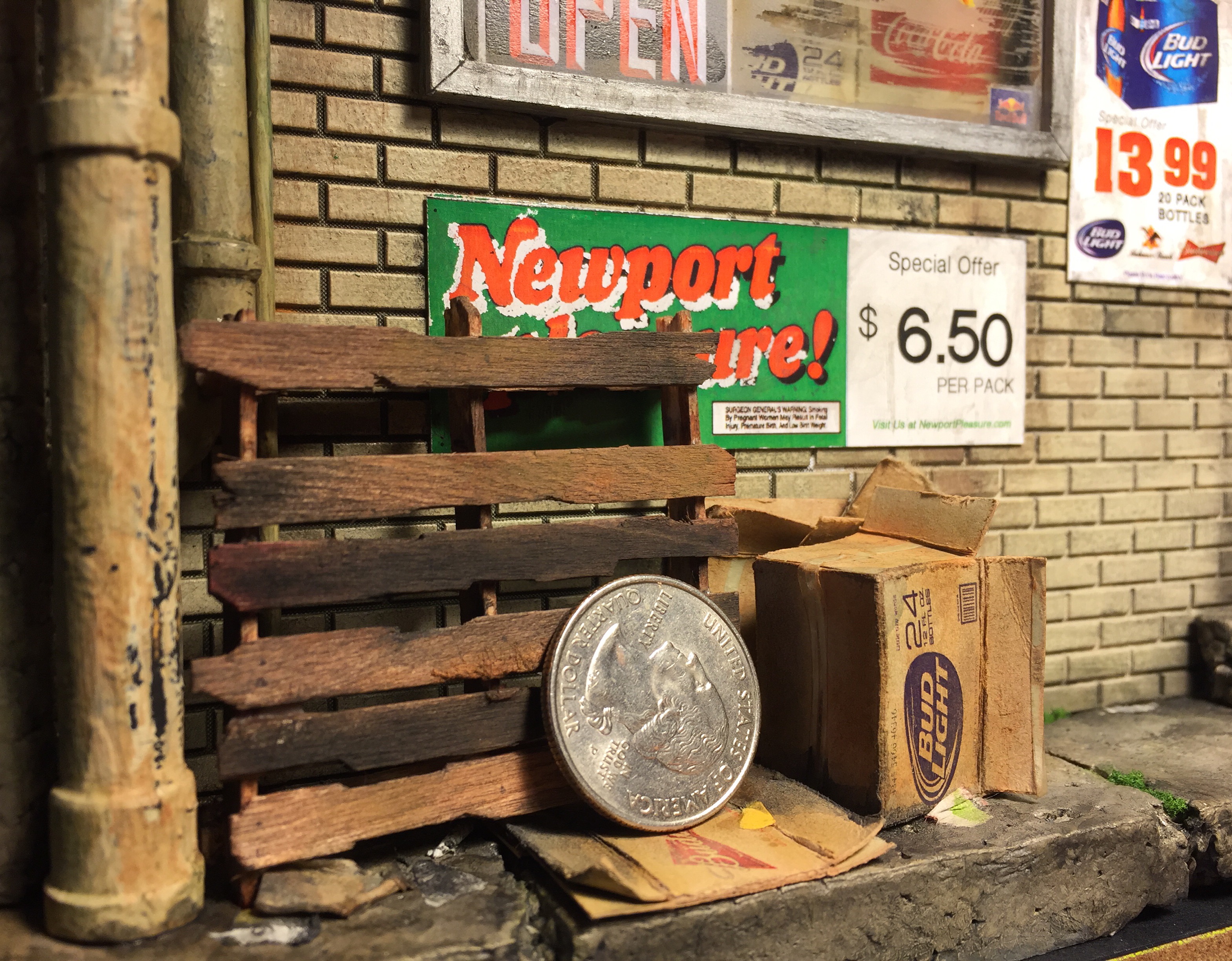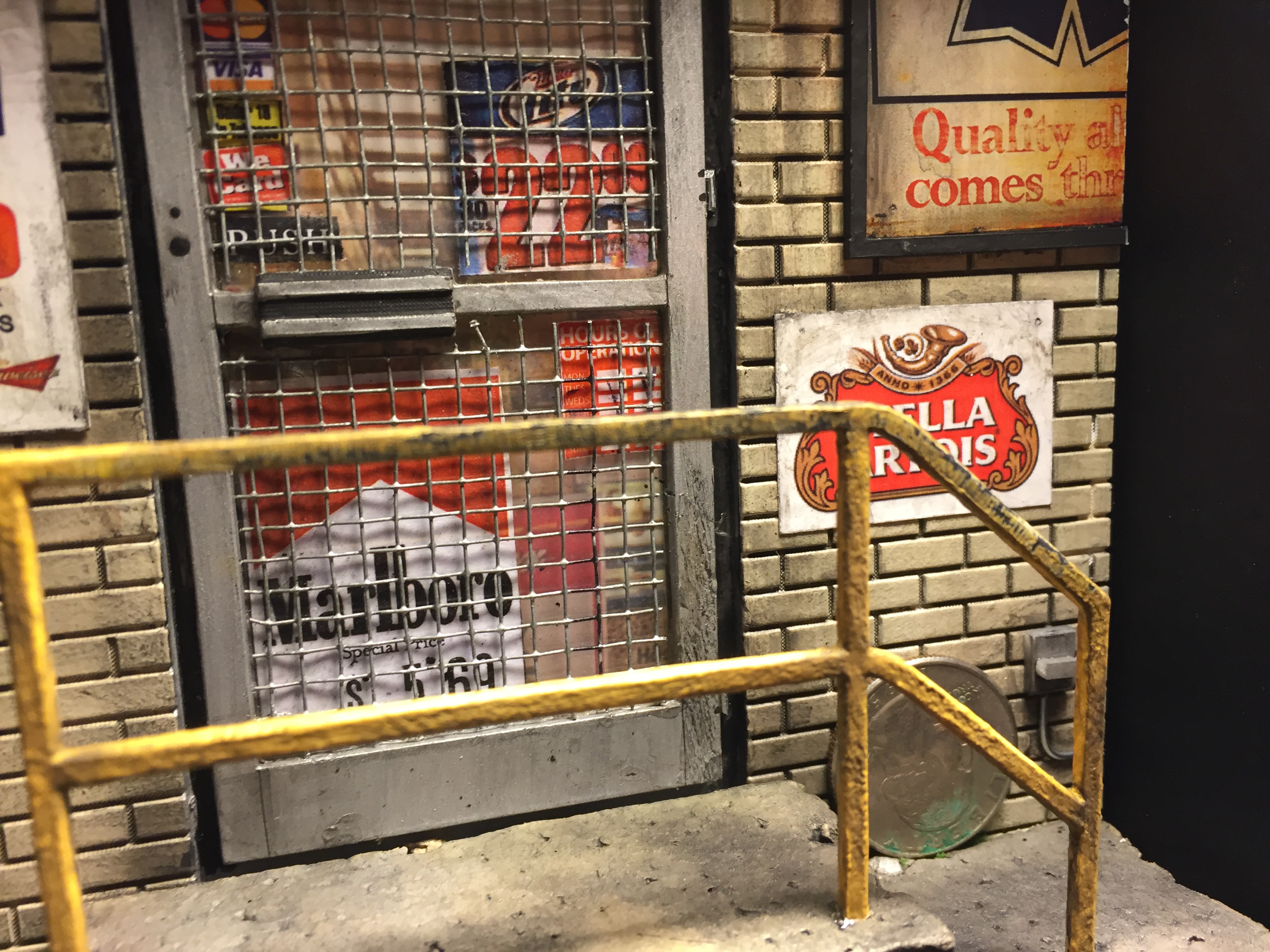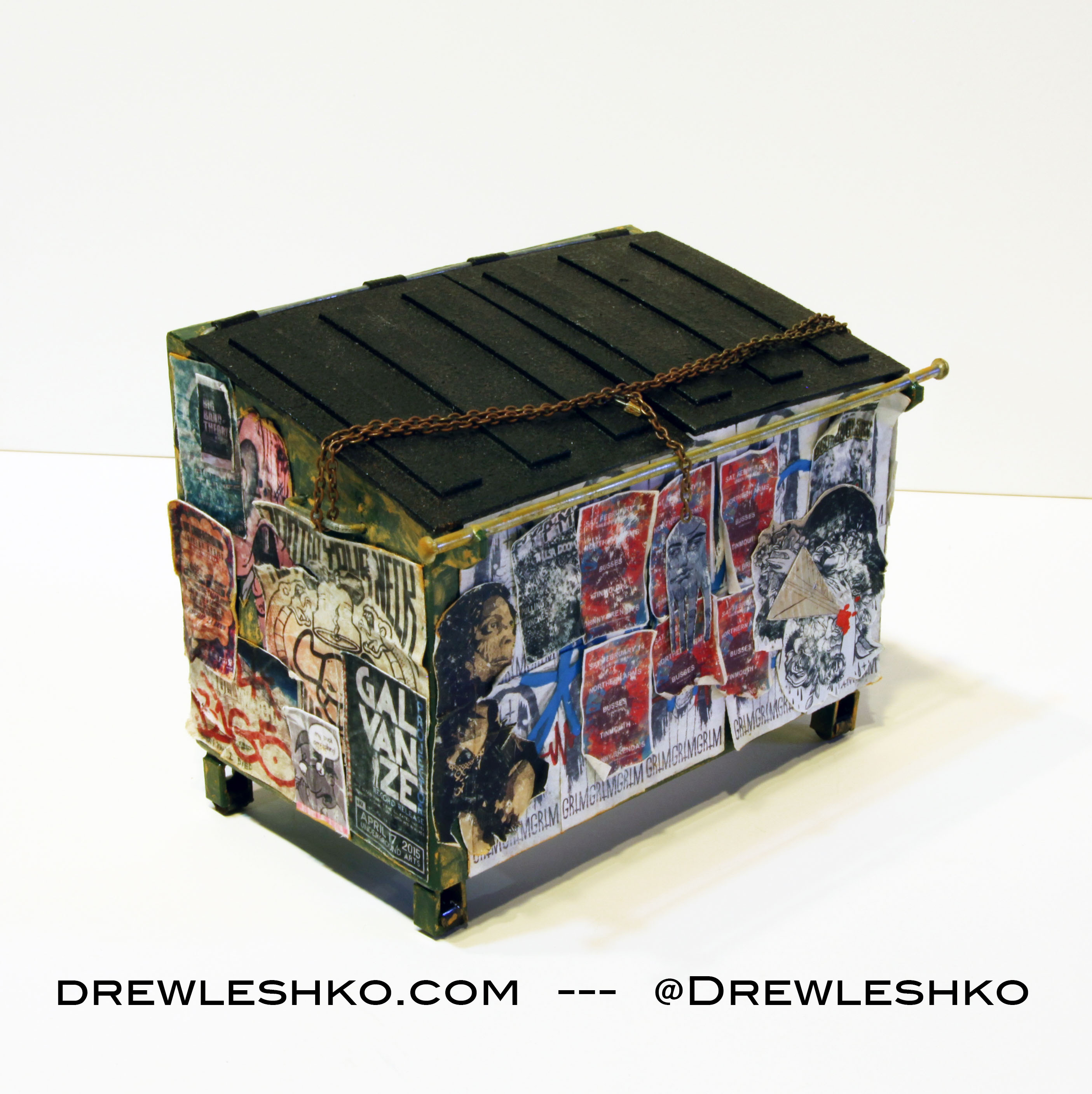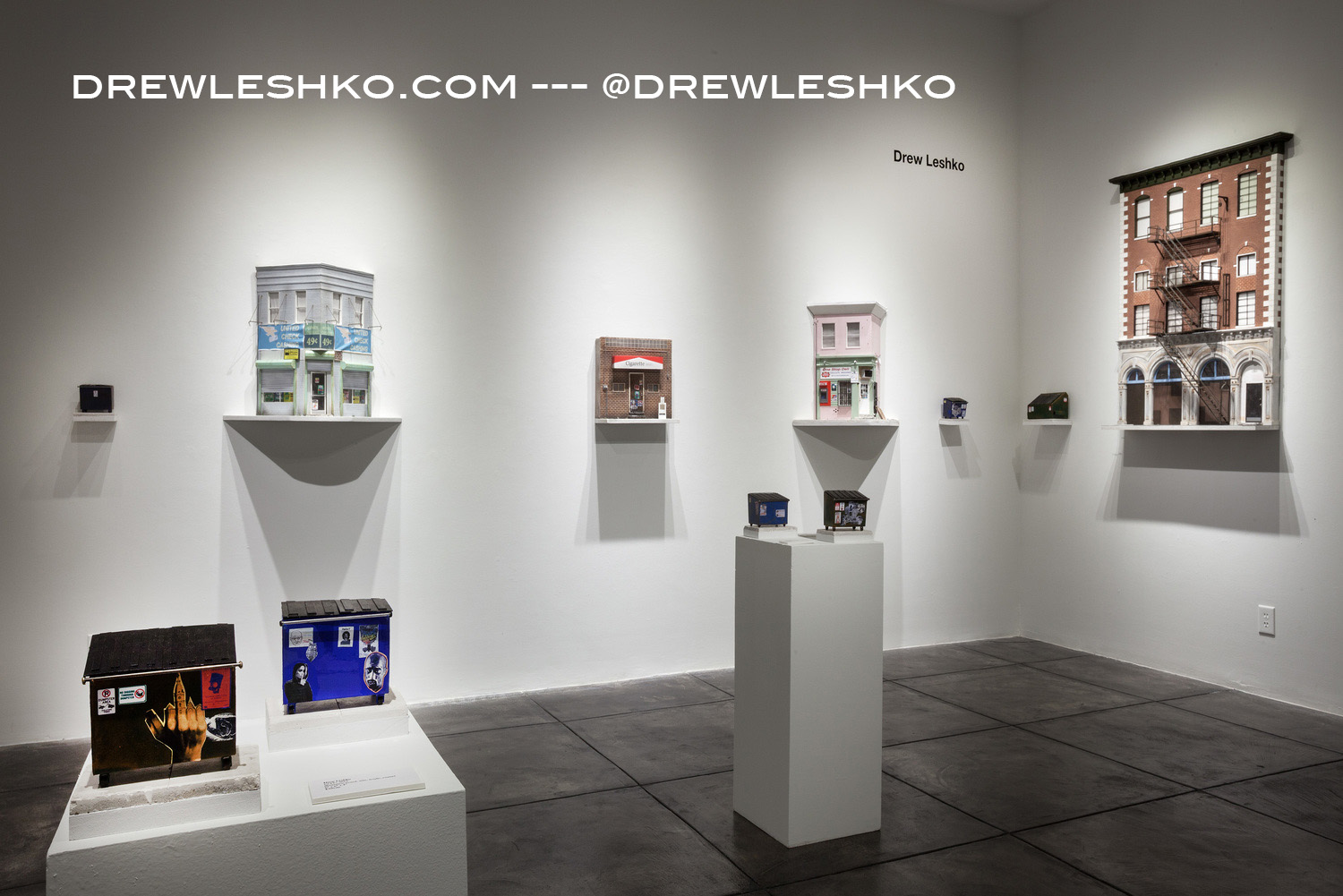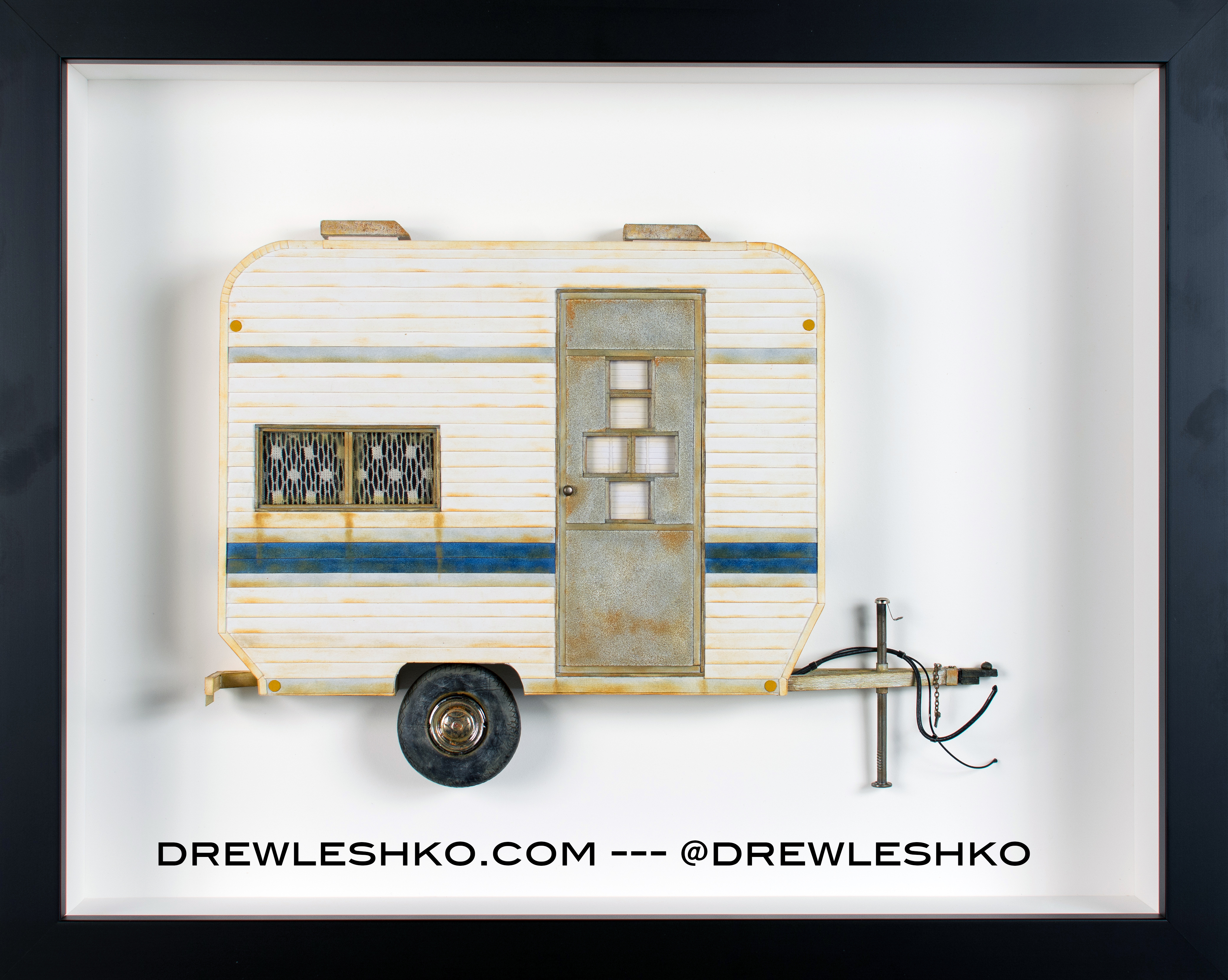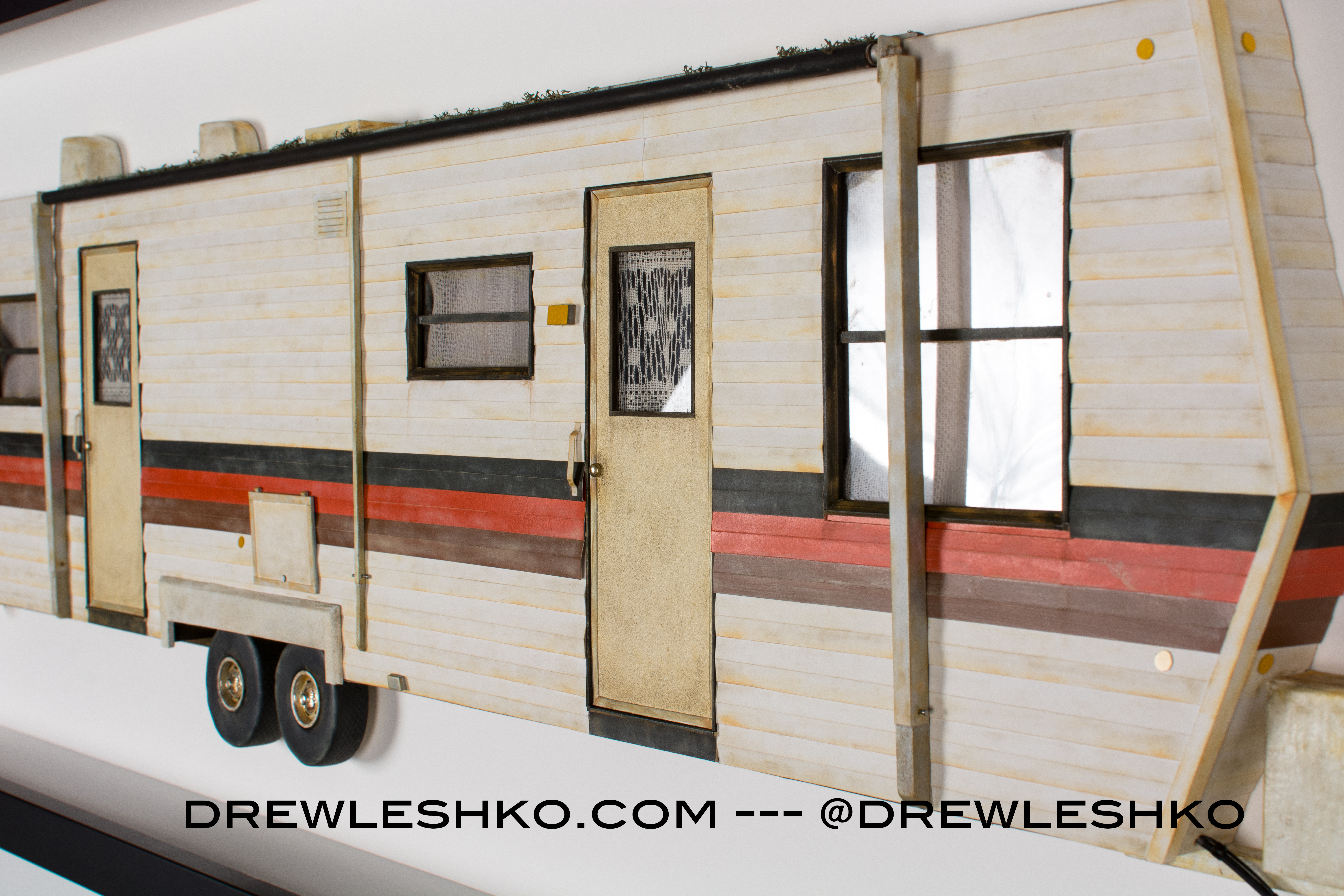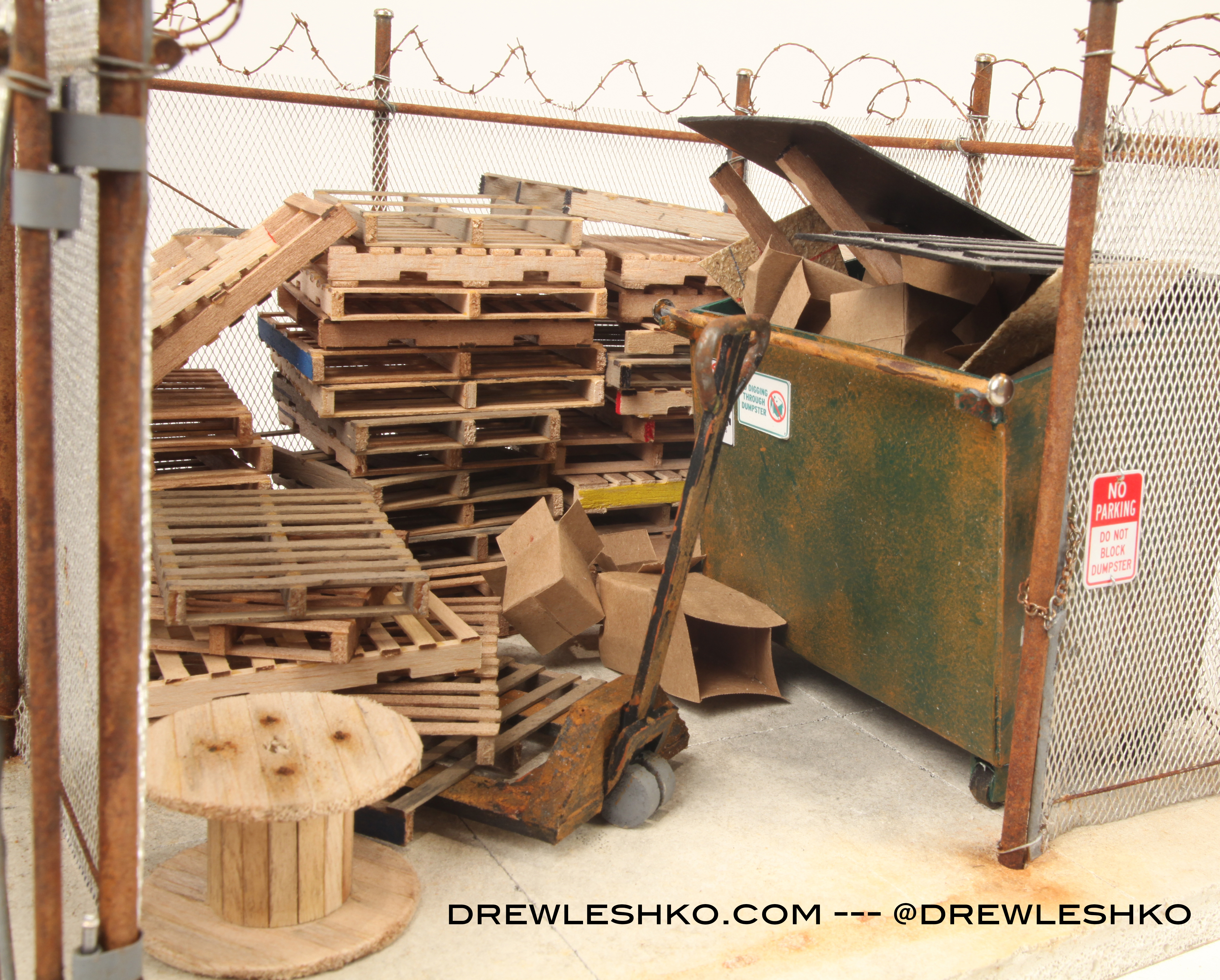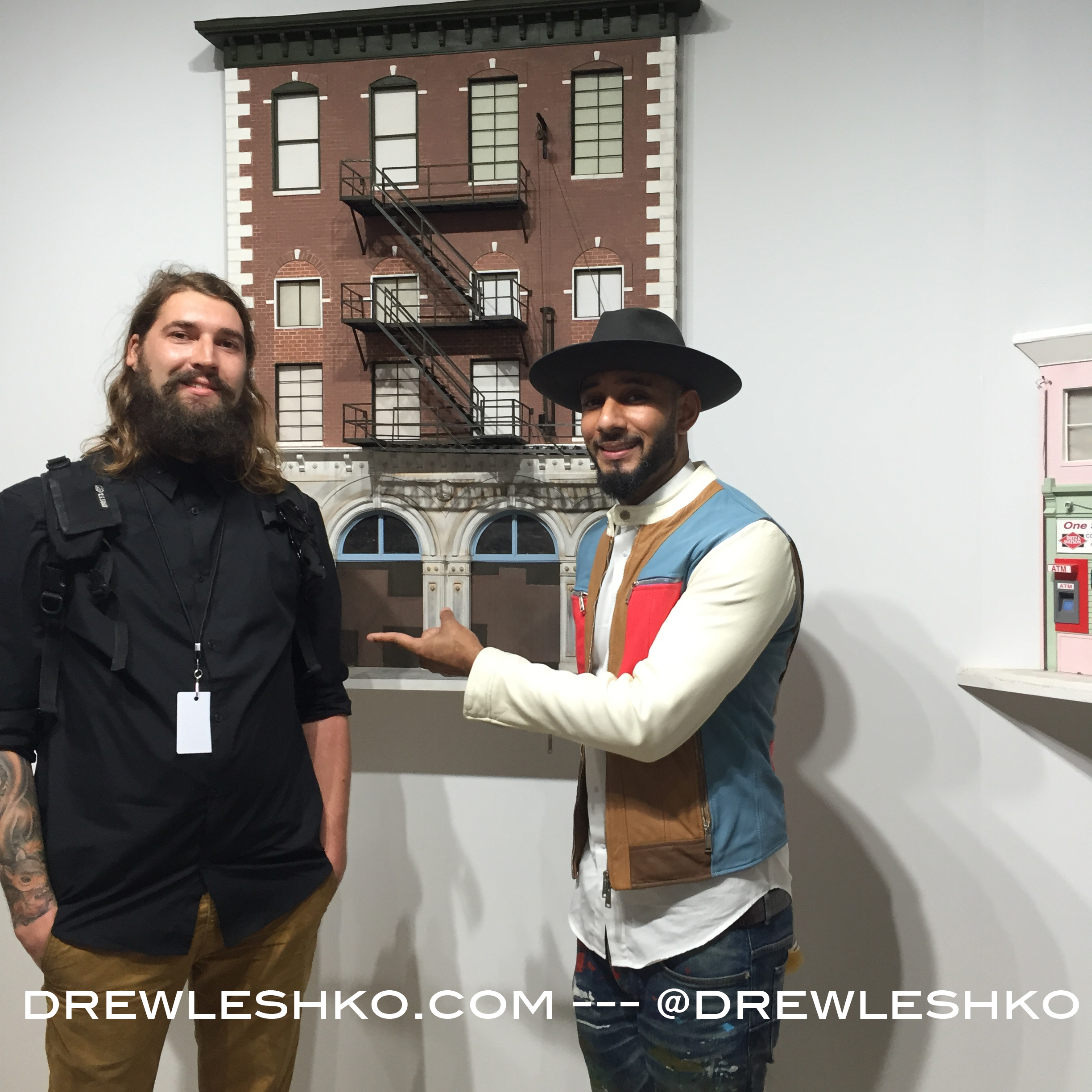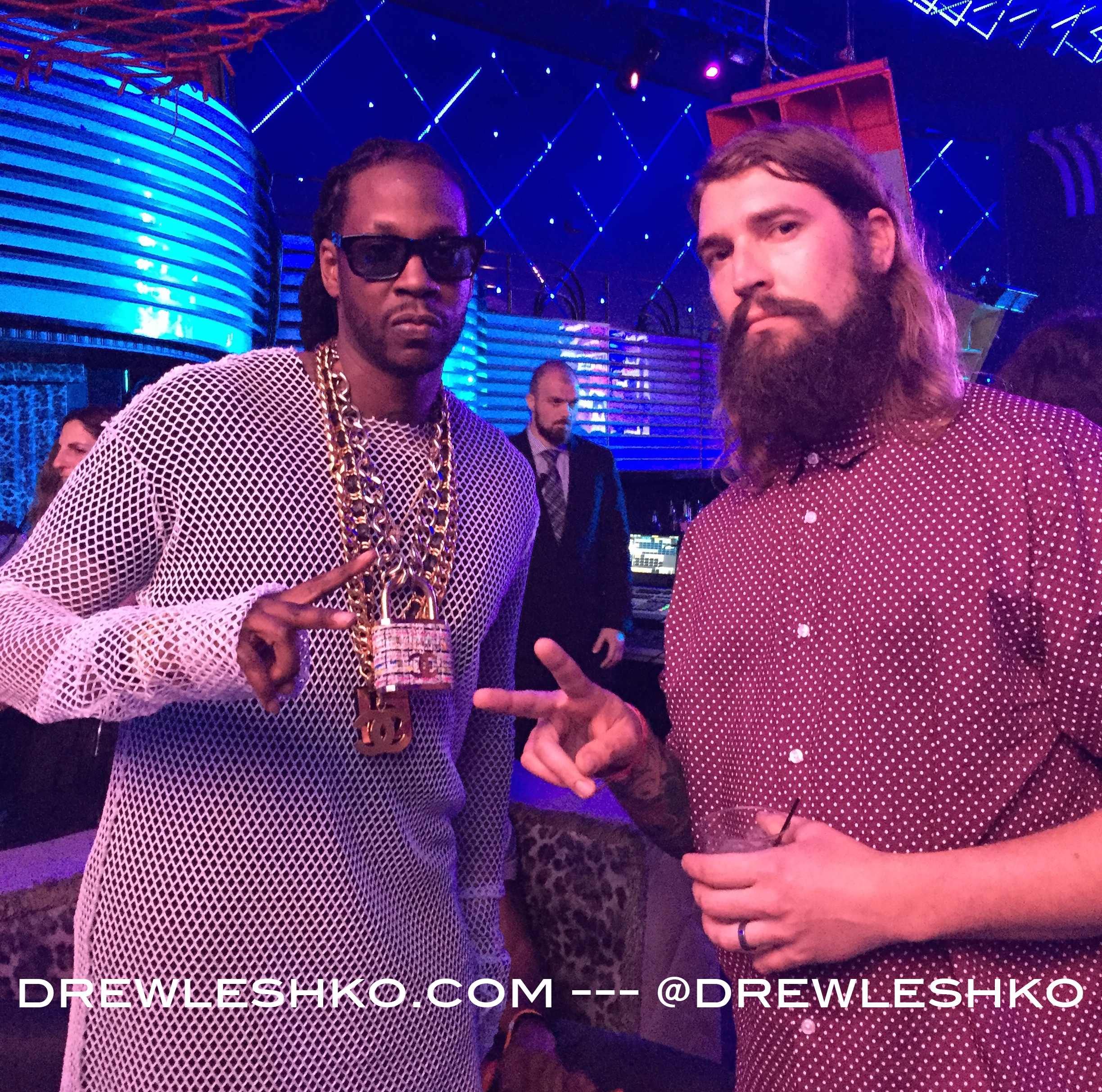Joshua Smith of Espionage Gallery
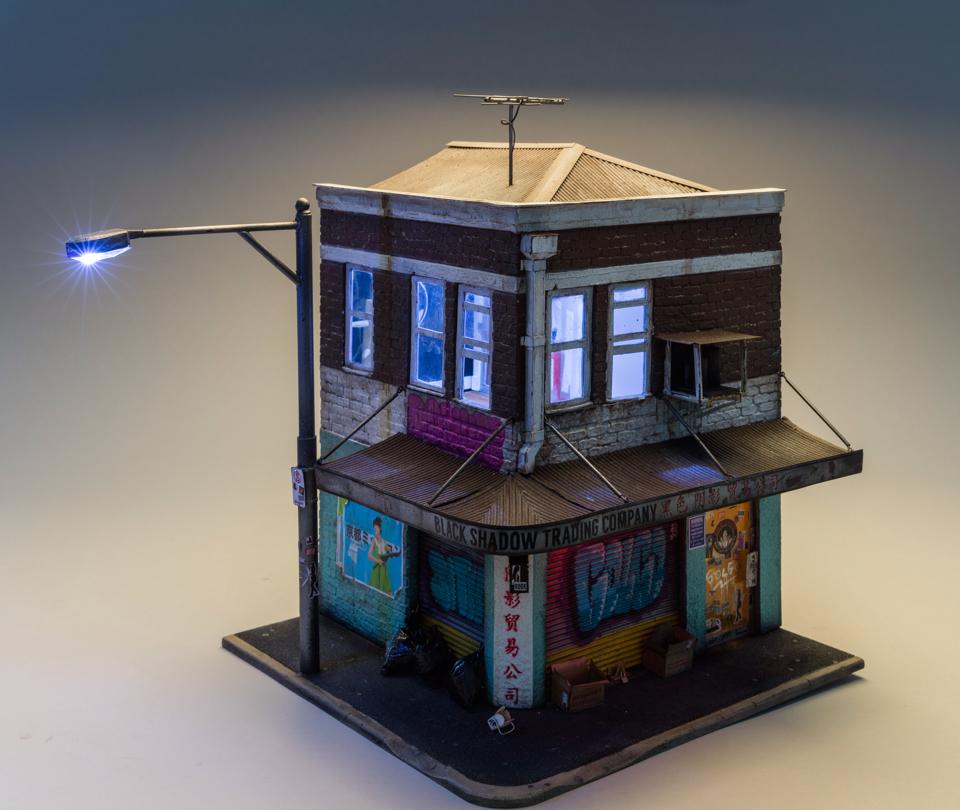 What’s your earliest memory with miniatures?
What’s your earliest memory with miniatures?
I have been fascinated with miniatures and modelmaking ever since I was little and can remember making miniature things out of cardboard boxes ever since I was very young.
How did you first get started making miniature sculptures?
It first started about 5 or 6 years ago when I was in a group exhibition customizing dumpsters made out of MDF. I decided to grime mine up and made a miniature version of myself complete with replica clothing and went dressed in the same outfit. The interest stems from building model kits when I was a kid and I have always been fascinated with miniature scenes from model railroads.
Do you remember the very first miniature you made?
It would have been the dumpster that I created for the exhibition 6 years ago with the miniature version of myself and glue bucket and broom. I still have it displayed in my glass cabinet amongst my art collection.
What is the most challe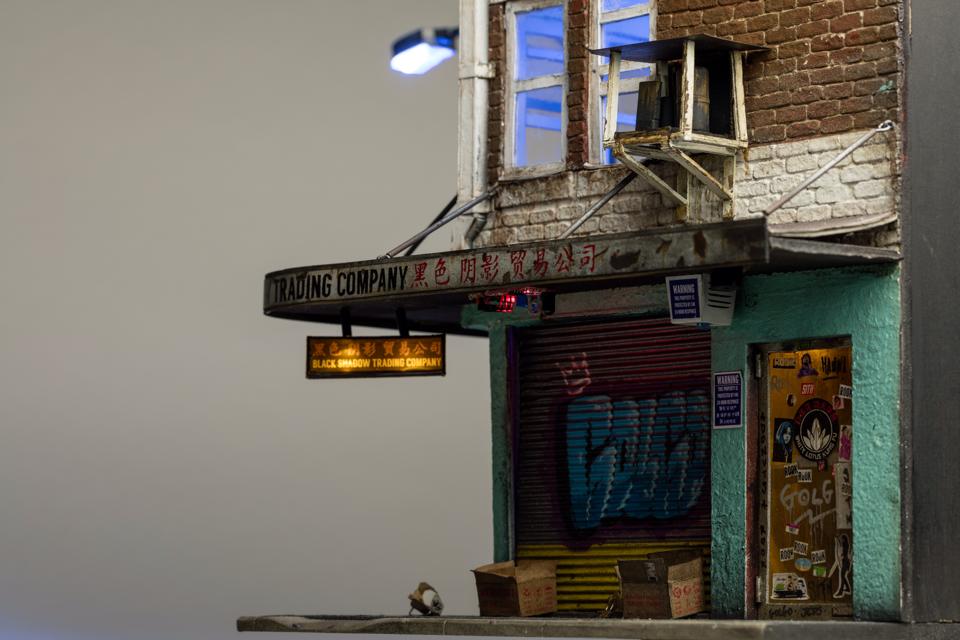 nging aspect of your work with miniatures?
nging aspect of your work with miniatures?
I think the most challenging thing is working out what to make certain things from. This is one of the main reasons I love doing miniature work so much; I love a challenge and the problem-solving skills that come with trying to figure out how to get miniatures to look realistic.
What is your favorite period of art history?
Probably the 80s and 90s. I am very heavily influenced with graffiti and street art and this was when it was really coming into it’s own.
What advice would you give to new artists?
Research. If you are doing miniature streetscapes like myself I often look at all the things that everyone overlooks like rust coming down a wall or where grime is forming. Things like gum on the sidewalk and discarded cigarette butts are the small things that can make a miniature street scene go from looking good to looking great. It is all these small details that make it.
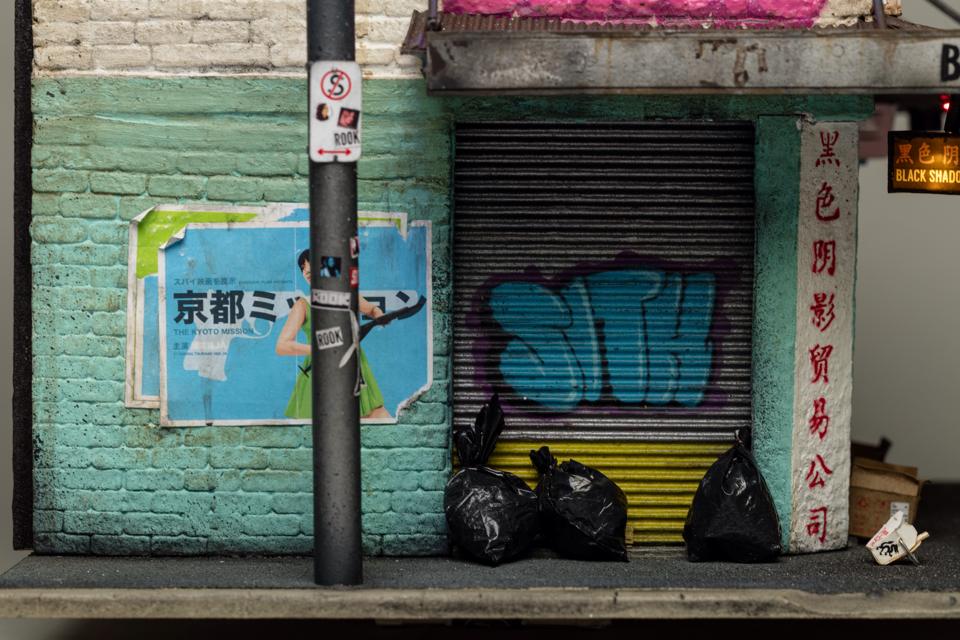
What wisdom have you learned from your time as Gallery Director of Espionage?
My art career itself spans over 16 years having over 170 exhibitions worldwide but it is my time as Gallery Director of Espionage Gallery for 4 years that I find most valuable. Having that time working out how to put on exhibitions, market myself, do promotion, hanging artwork and everything coming from running a gallery really gave me an appreciation to the other side of the artworld. Very rarely do you see someone who has played both sides both as an artist and as the person selling the artwork. Both sides of the coin can be very difficult financially but gives you a greater understanding to how it works. It also makes you very dedicated and disciplined — something which now extends to my artwork.
What inspires you?
The city! Especially Melbourne. I live for the grime. I love alleyways filled with rubbish, grime and rust especially around the Chinatown precinct. To me, the grime and decay of old buildings really makes it for me and I think it tells more of a story and history than a clean pristine building.
 What is the most memorable miniature you have ever seen?
What is the most memorable miniature you have ever seen?
This is tough one! There are plenty of great artists that I follow now but Satoshi Araki is one of my favorites as he does things which are a little different. One of his recent works was of a shop front of a used robot shop with a Gundam robot, Wall-E and R2D2 out the front!
What is your hope for the field of miniatures?
It’s funny, when I really started getting into doing my miniature streetscapes about 6 months ago I thought I was the only person doing them. Since then I have come across other amazing artists such as Drew Leshko, Randy Hage, What the Hell and Satoshi Araki. I would love for these artists to come together and do an international exhibition of streetscape miniatures. I think the world is now just coming across this artform and embracing it as miniature sculpture you can display or hang on a wall rather than someone just doing a hobby. I would like to see the industry really come into it’s own in the artworld, and I think people like Drew Leshko are really pushing the movement forward.
What would you like to see replicated in miniature that you have not yet seen?
Again another tough one! There are plenty of amazing detailed beautiful buildings that I see everyday which I would love to replicate as miniatures. Unfortunately, due to their scale and complexity it would take me months or years to recreate at such a small scale!
Why miniature sculptures?
I think it’s the challenge. I like making things which look realistic and I like to play with perspective. It’s funny when I take photos of my miniatures… people think that it is something that is actual real life scale but then when I take a photo of something in real life, they are wondering if it is miniature! I like messing around with that and it is something that I really enjoy doing.
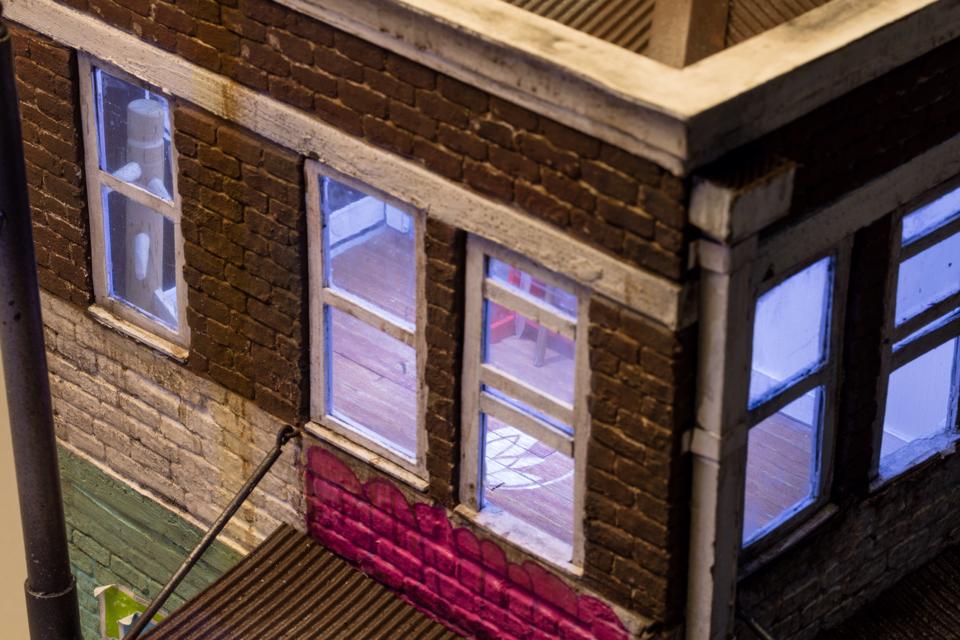 What’s to come from Joshua Smith?
What’s to come from Joshua Smith?
I am now looking to have a solo exhibition in the United States in either Denver, Chicago, New York or San Francisco. I am approaching galleries in the USA to make this happen. I’ve also recently been contacted by some leading galleries in London and Paris in regards to showing my work in 2016. I’m currently working on some small works for group exhibitions but aiming to do a solo exhibition in both cities.
I am also working towards a duo show which will be somewhere in the States next year working with Minnesotan based artist, Hanna Newman. Hanna and myself met in early 2015 and have collaborated on other projects in Australia but are now looking at working together in the U.S. The idea at this stage is making miniatures of spaces which Hanna has taken black and white photography of, and recreating these as miniatures and displaying them side by side. I would love to be able to also showcase this work in Japan next year as well.
In terms of Espionage Gallery, I may have another group exhibition most likely in Melbourne but aiming more to focus on my own work. I would love to organize a group exhibition of other miniature artists work here in Australia!
Never stop and never let anyone tell you what to do.
Other activities and hobbies you enjoy?
I love the cinema, especially old films and Hong Kong cinema. When I am not creating I am usually watching films both at home and in theaters. I love the escapism you get from watching movies where you can be transported to another time and place.
What do you want miniature fans to know about you?
I would just like to thank everyone for their support in my new direction. I was doing stencil art for the last 16 years and needed to move in a new direction which is now miniatures. As much as I love making minis, it is everyone’s support and advice that keeps me going so thank you! I would also love to express my appreciation for other artists such as Ryan Monahan, Drew Leshko and Randy Hage. You guys really inspire me!
Joshua Smith hails from Adelaide, Australia. Joshua worked in stencil art for more than 15 years and now focuses on miniature sculptures and his efforts as Director of Espionage Gallery. For more information, check him out on Instagram!
